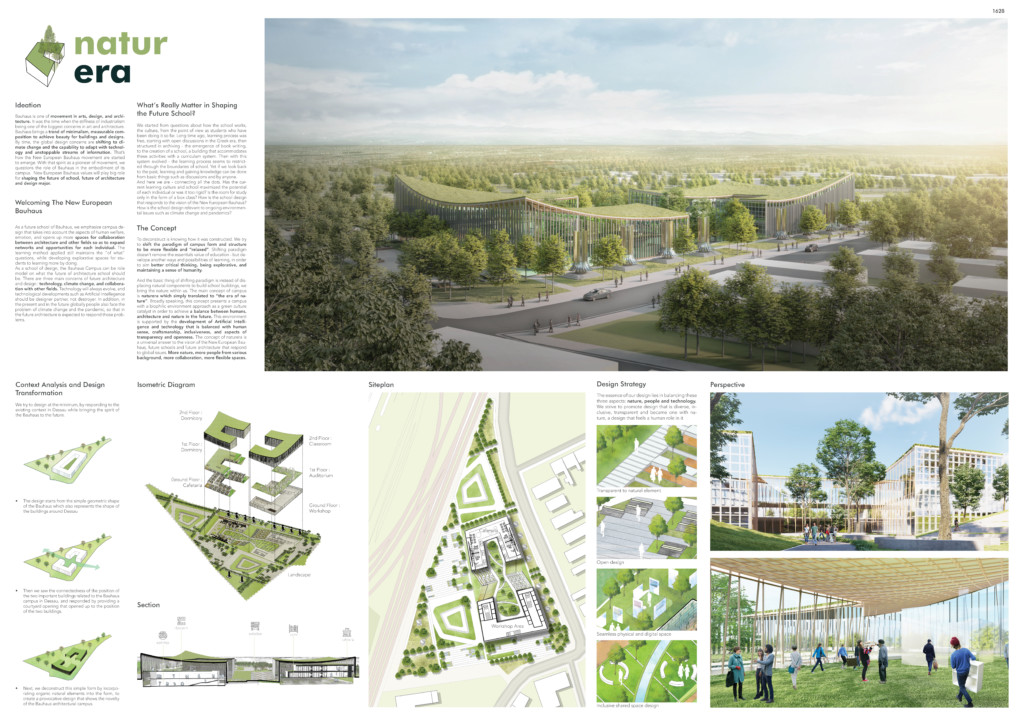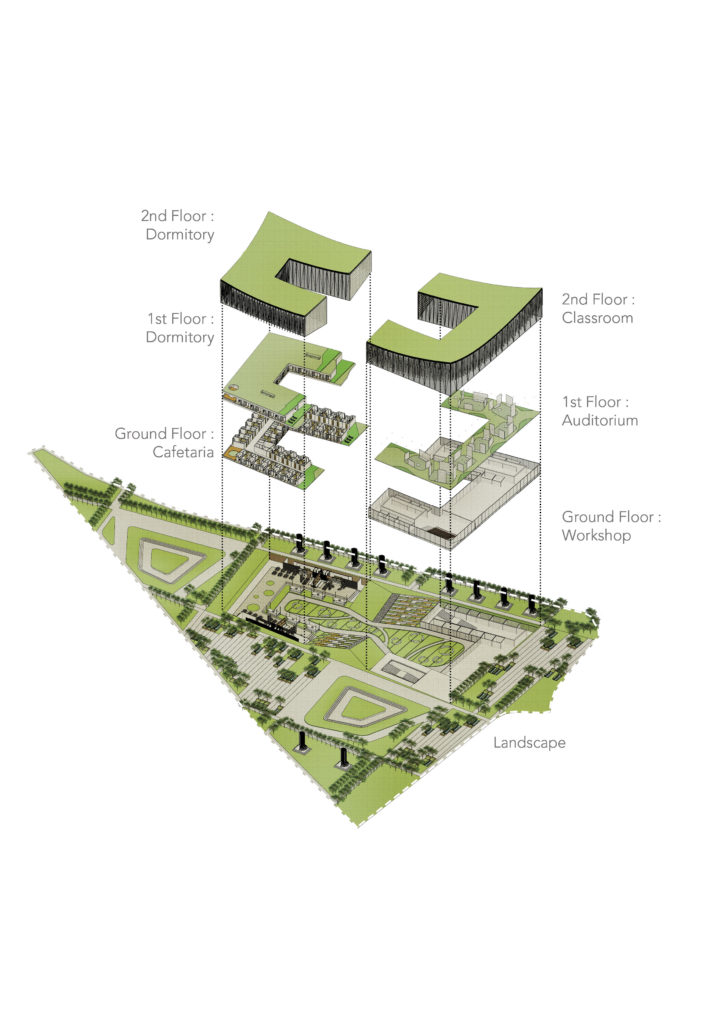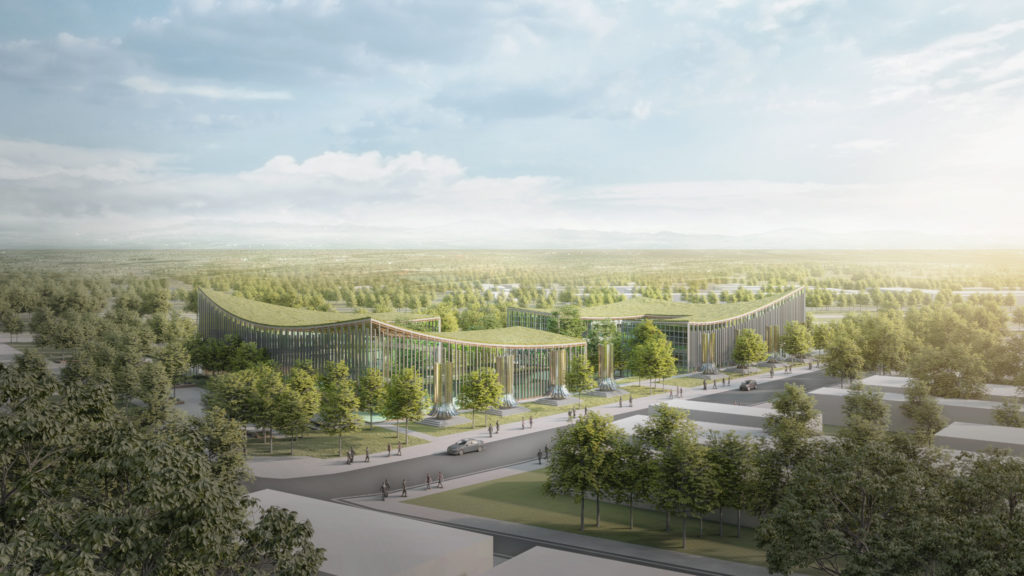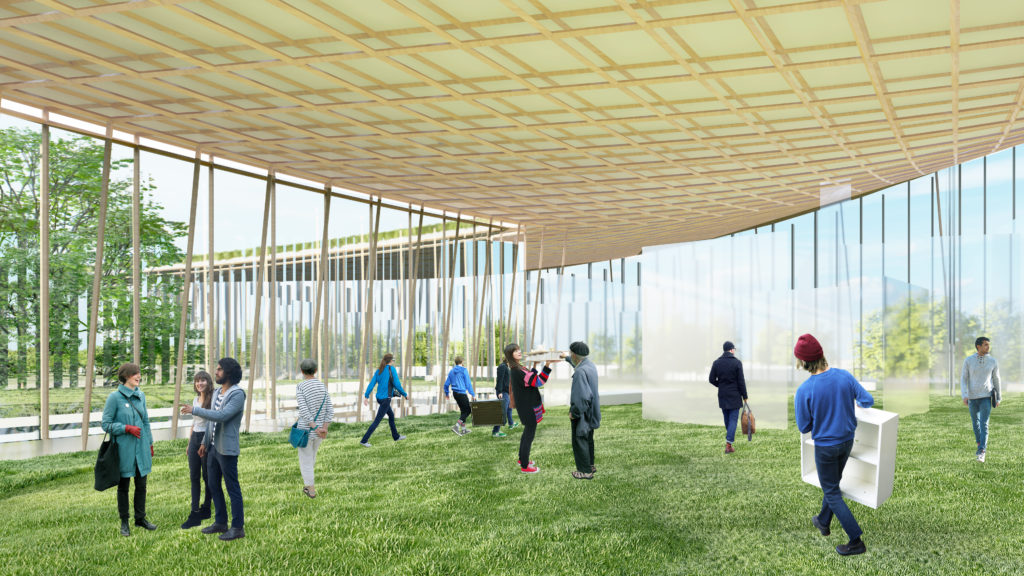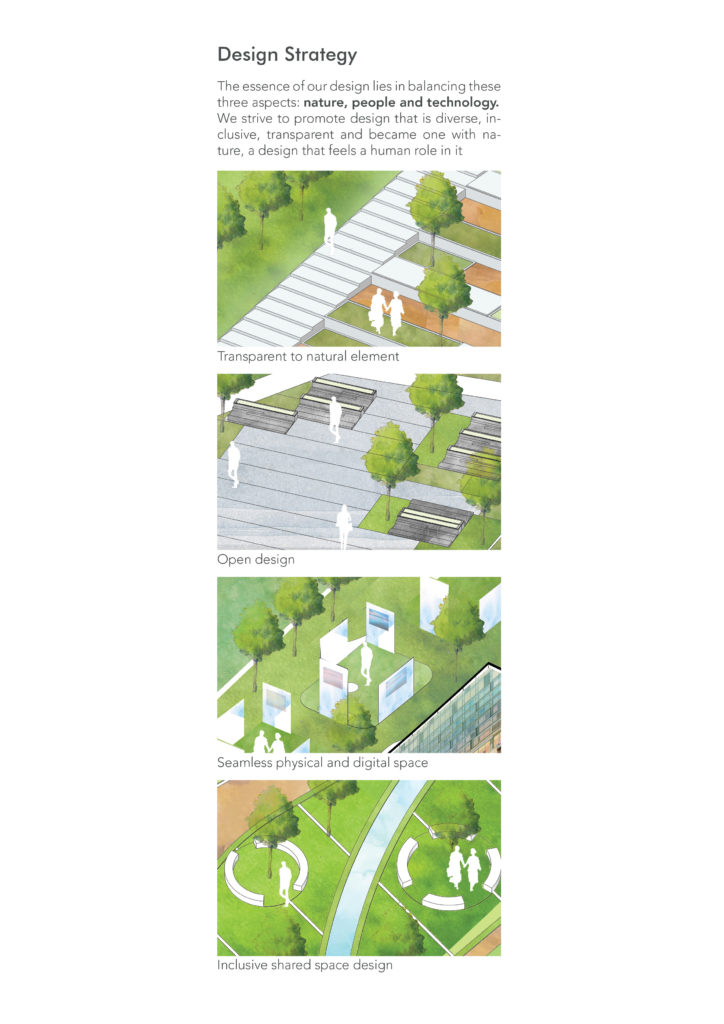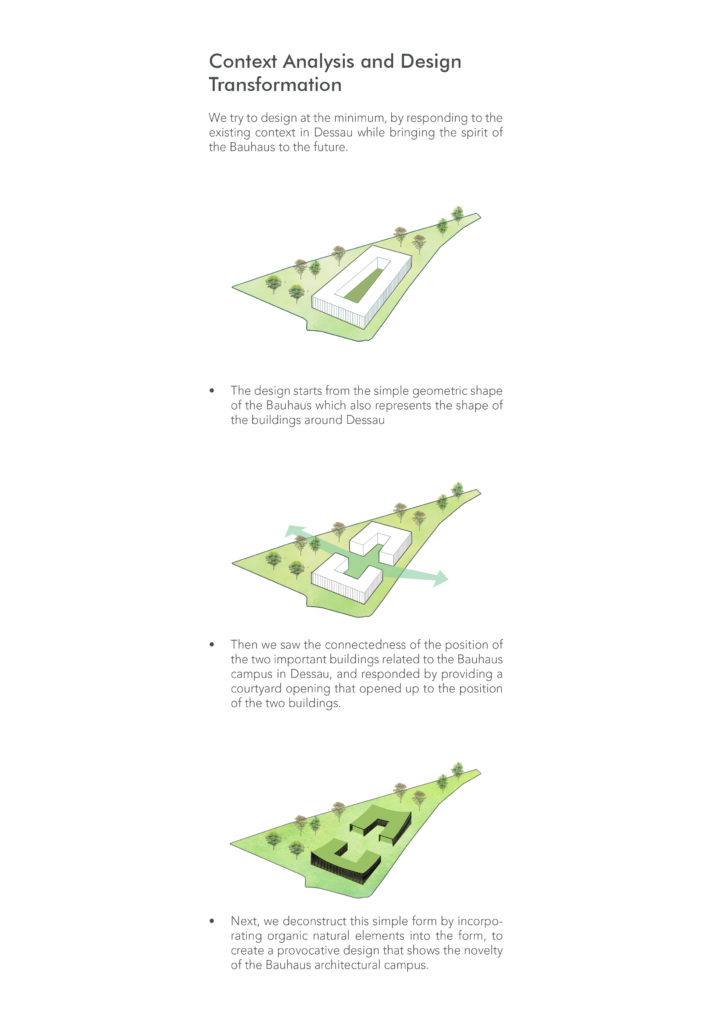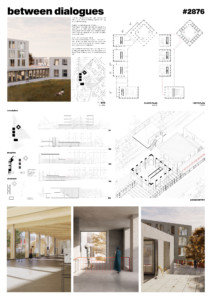NATUR ERA
Ideation
Bauhaus is one of movement in arts, design, and architecture. It was the time when the stiffness of industrialism being one of the biggest concerns in art and architecture. Bauhaus brings a trend of minimalism, measurable composition to achieve beauty for buildings and designs. By time, the global design concerns are shifting to climate change and the capability to adapt with technology and unstoppable streams of information. That’s how the New European Bauhaus movement are started to emerge. With that spirit as a pioneer of movement, we questions the role of Bauhaus in the embodiment of its campus. New European Bauhaus values will play big role for shaping the future of school, future of architecture and design major.
Welcoming The New European Bauhaus
As a future school of Bauhaus, we emphasize campus design that takes into account the aspects of human welfare, emotion, and opens up more spaces for collaboration between architecture and other fields so as to expand networks and opportunities for each individual. The learning method applied still maintains the «of what» questions, while developing explorative spaces for students to learning more by doing.
As a school of design, the Bauhaus Campus can be role model on what the future of architecture school should be. There are three main concerns of future architecture and design : technology, climate change, and collaboration with other fields. Technology will always evolve, and technological developments such as Artificial Intellegence should be designer partner, not destroyer. In addition, in the present and in the future globally people also face the problem of climate change and the pandemic, so that in the future architecture is expected to respond those problems.
What’s Really Matter in Shaping the Future School?
We started from questions about how the school works, the culture, from the point of view as students who have been doing it so far. Long time ago, learning process was free, starting with open discussions in the Greek era, then structured in archiving – the emergence of book writing, to the creation of a school, a building that accommodates these activities with a curriculum system. Then with this system evloved – the learning process seems to restricted through the boundaries of school. Yet if we look back to the past, learning and gaining knowledge can be done from basic things such as discussions and by anyone.
And here we are – connecting all the dots. Has the current learning culture and school maximized the potential of each individual or was it too rigid? Is the room for study only in the form of a box class? How is the school design that responds to the vision of the New European Bauhaus? How is the school design relevant to ongoing environmental issues such as climate change and pandemics?
Concept
To deconstruct is knowing how it was constructed. We try to shift the paradigm of campus form and structure to be more flexible and «relaxed». Shifting paradigm doesn’t remove the essentials value of education – but develope another ways and possibilities of learning, in order to aim better critical thinking, being explorative, and maintaining a sense of humanity.
And the basic thing of shifting paradigm is instead of displacing natural components to build school buildings, we bring the nature within us. The main concept of campus is naturera which simply translated to “the era of nature”. Broadly speaking, this concept presents a campus with a biophilic environment approach as a green culture catalyst in order to achieve a balance between humans, architecture and nature in the future. This environment is supported by the development of Artificial Inbtellegence and technology that is balanced with human sense, craftsmanship, inclusiveness, and aspects of transparency and openness. The concept of naturera is a universal answer to the vision of the New European Bauhaus, future schools and future architecture that respond to global issues. More nature, more people from various background, more collaboration, more flexible spaces.
Context Analysis and Design Transformation
We try to design at the minimum, by responding to the existing context in Dessau while bringing the spirit of the Bauhaus to the future.
- The design starts from the simple geometric shape of the Bauhaus which also represents the shape of the buildings around Dessau
- Then we saw the connectedness of the position of the two important buildings related to the Bauhaus campus in Dessau, and responded by providing a courtyard opening that opened up to the position of the two buildings.
- Next, we deconstruct this simple form by incorporating organic natural elements into the form, to create a provocative design that shows the novelty of the Bauhaus architectural campus.
Design Strategy
The essence of our design lies in balancing these three aspects: nature, people and technology.
We strive to promote design that is diverse, inclusive, transparent and one with nature, a design that feels a human role in it
Our design applications include:
- Inclusive shared space design
- Open design school and workplace
- Transparent to natural element
- Seamless physical and digital space
